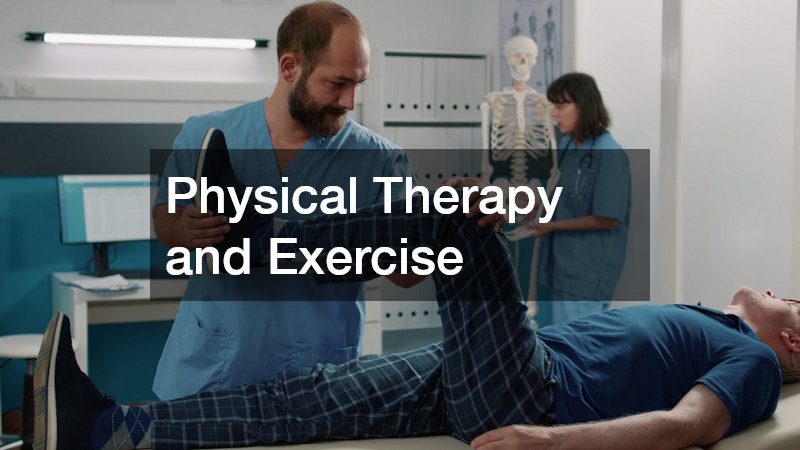
This article explores the various solutions for back pain and provides guidance on when it’s essential to consult a specialist. Understanding when professional intervention is needed can prevent further complications and ensure timely management of back issues. Many individuals experience back pain at some point in their lives, highlighting the importance of knowing when to seek professional help.
Recognizing the benefits of timely care can significantly affect recovery outcomes and long-term health.
Muscle or Ligament Strain
Muscle or ligament strains are often the result of improper lifting, sudden awkward movements, or excessive activity. When these tissues are overstretched or torn, it can lead to significant back pain and limited mobility. Treatment typically involves rest, ice, compression, and elevation (RICE), along with over-the-counter (OTC) pain relievers to reduce inflammation.
Identifying the cause of a strain is crucial for effective treatment and to prevent further injury. Practicing good posture and regular stretching can also reduce the risk of strains. Professional assessment may be necessary if the pain persists despite self-care efforts.
Bulging or Ruptured Disks
Disks act as cushions between the vertebrae in the spine, and issues such as bulging or ruptured disks can lead to significant discomfort. These conditions occur when the soft material inside the disk protrudes through the tougher exterior, irritating nearby nerves. This often results in pain, numbness, or weakness in the back and legs.
While some people with disk issues experience no symptoms, others may face debilitating pain that restricts daily activities. Conservative treatments like medication and physical therapy are typically the first line of defense. If symptoms persist, surgery might be considered to alleviate nerve pressure.
Arthritis and Osteoporosis
Arthritis, particularly osteoarthritis, can contribute to back pain due to inflammation and the breakdown of cartilage. As cartilage wears down, bones may rub together, causing pain and stiffness in the spine. Osteoporosis, characterized by weakened bones, can result in fractures that bring about sudden and severe back pain.
Managing arthritis and osteoporosis often involves medications like NSAIDs to manage pain and inflammation, as well as lifestyle modifications. Dietary changes to incorporate more calcium and vitamin D are essential to bone health, alongside regular weight-bearing exercises. Early diagnosis and treatment can help slow disease progression and maintain quality of life.
Over-the-Counter Medication
OTC medications like ibuprofen and acetaminophen are commonly used to manage back pain. They work by reducing inflammation and providing pain relief. It’s essential to follow dosage guidelines to minimize potential side effects.
These medications are most effective for mild to moderate pain and should be complemented by other conservative treatments. Using medication as a temporary measure allows individuals to engage in other therapeutic activities, such as stretching and exercises. Consistent pain despite OTC treatment might warrant a consultation with a healthcare provider.
Physical Therapy and Exercise
Physical therapy plays a critical role in managing back pain through tailored exercises that strengthen muscles and improve flexibility. Therapists design individualized programs that address specific pain sources, promoting recovery and preventing recurrence. Regular engagement in low-impact aerobics, core strengthening, and stretching exercises can lead to significant improvements.
Exercise not only alleviates discomfort but also enhances overall health and well-being. Activities like yoga and swimming are recommended due to their minimal strain on the back while still offering full-body benefits. Incorporating physical activities into daily routines helps in maintaining a healthy weight, which further reduces back strain.
Home Remedies and Lifestyle Changes
Home remedies like hot or cold therapy can provide immediate relief for acute back pain episodes. Applying a warm towel or heating pad can relax tense muscles, while cold packs help reduce inflammation. Alternating between heat and cold might prove beneficial in alleviating persistent symptoms.
Lifestyle changes such as optimizing ergonomic support at work and home can prevent back pain. It’s crucial to maintain a healthy body weight, as excess weight can exacerbate back problems. Including a balanced diet rich in anti-inflammatory foods, like fruits and vegetables, supports overall health and pain management.
Nerve Symptoms and Red Flags
Nerve-related symptoms such as numbness, tingling, or weakness in the limbs require immediate medical attention. These signs may point to nerve compression or more severe neurological concerns. Recognizing these “red flags” can prevent serious complications like permanent nerve damage.
A specialist can perform diagnostic tests such as nerve conduction studies to determine the best course of action. Interventions may vary from physical therapy to surgical procedures aimed at relieving nerve pressure. Early detection and treatment contribute to better recovery odds and reduced pain duration.
Post-Treatment Concerns
When back pain lingers after standard treatments, consulting a specialist might be necessary to explore further options. Continual discomfort despite initial interventions can indicate the need for a deep evaluation of underlying causes. Specialists have access to advanced therapeutic techniques and resources not available in general practice.
In conclusion, understanding the common causes of back pain and the available treatments empowers individuals to make informed decisions. Recognizing the signs indicating the need for specialist attention can significantly impact recovery outcomes and quality of life. By exploring various treatment avenues, individuals can effectively manage their back pain and maintain a healthy lifestyle.




